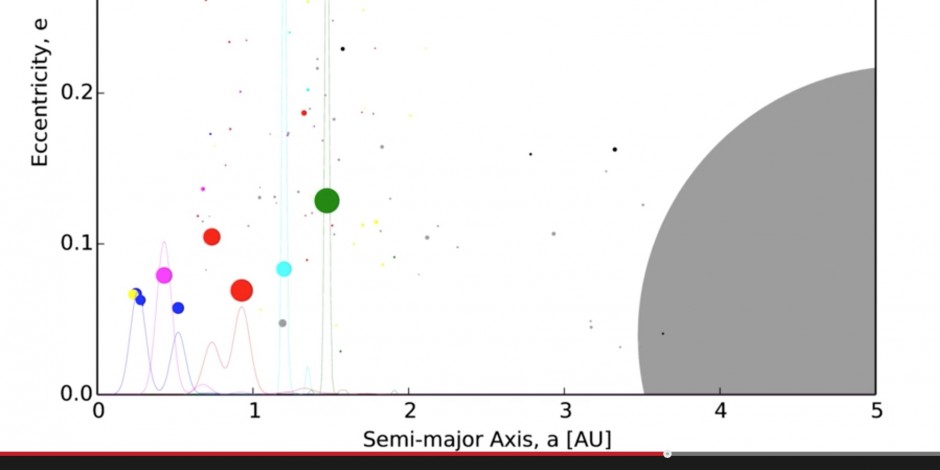Collisions in the computer

The worlds’ fastest code for simulating planet formation calculates millions of possible orbits and close encounters between celestial bodies. It was developed by scientists of PlanetS at the University of Zurich.
The video shows a real time visualization of 100000 test particles in Jupiters gravitational field simulated with GENGA.
GENGA2 is the name of the newest tool to study how terrestrial planets like Earth were formed. «Computer simulations like this allow us to follow the trajectories of the planetary building blocks and the collisions between them that build up their mass,» explains Simon Grimm, Postdoc at the University of Zurich and Bern and member of PlanetS. «The simulations are needed because it is not possible to observe the full process of planet formation since the involved planetesimals are too small and to far away.»
GENGA2 is the world’s fastest gravitational N-body simulation code for planet formation. «N» stands for a given number. In general, N-body simulations solve the equations of motion of «N» objects under the mutual gravitational influence – an extremely difficult task that takes a lot of time and therefore can become very expensive to perform. «To achieve high speed and precision, our simulation makes use of the very efficient computing power of Graphics Processing Units, so called GPUs, to calculate planetary trajectories», explains Simon Grimm.
GPUs normally are used for calculating and displaying rapid video effects needed for realistic computer games. They contain thousands of individual cores optimised for this purpose. This explains the name GENGA, an abbreviation for Gravitational Encounters with Gpu Acceleration. After having developed a first version of the code the Zurich group now publishes a new paper describing further progress. «GENGA2 is an improvement of GENGA which allows a more efficient treatment of close encounters between bodies», says Simon Grimm.
Time lapse of cosmic history
In a typical simulation the computer starts with a set of about 2000 planetesimals having the mass of a few earth masses distributed in a disk around a central star. Through collisions bigger objects are formed but due to gas drag some of the planetesimals fall into the sun. If after one million years Jupiter and Saturn are formed and added to the system, the formation of terrestrial planets speeds up and ends after 10 to 50 million years with a few terrestrial planets.
The video shows the formation process of terrestrial planets simulated with GENGA.
Besides studying planet formation, GENGA can also be useful to simulate the orbits of many exoplanetary systems in parallel and check which planetary configuration remain stable over time. This helps determining the orbital parameters of detected exoplanets that may contain errors and uncertainties. «Numerical simulations allow us to study the statistical variation in exoplanetary systems, the impact history and chemical composition of the formed planets,» explains Simon Grimm. The group is part of the PlanetS project «Numerical Laboratories» led by Ben Moore, professor at the University of Zurich. (bva)
http://nccr-planets.ch/research/projects/project-6/
Categories: External Newsletter
